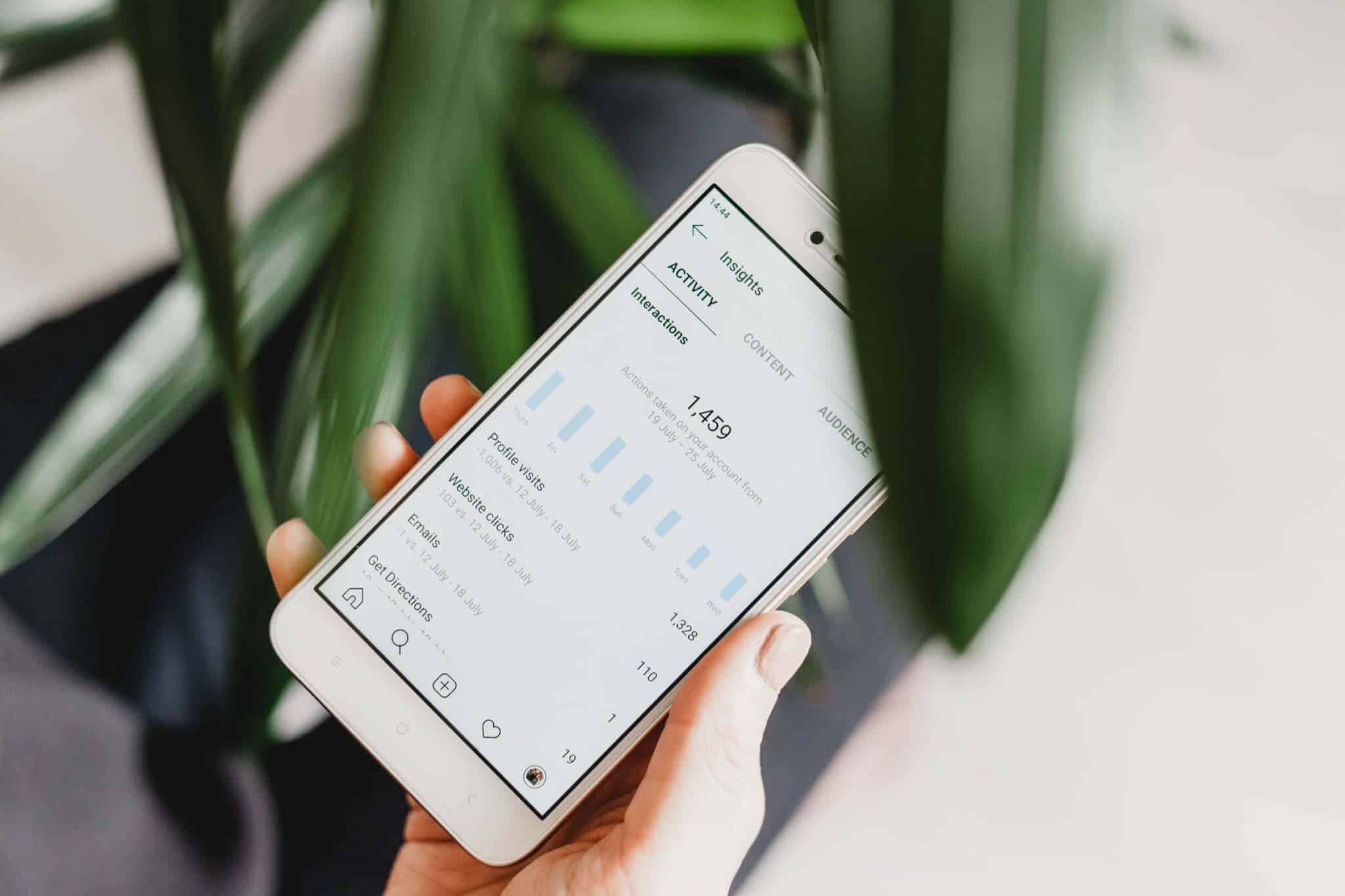Social media has become a go-to for connecting with others, sharing content, and discovering new brands. But businesses and marketers now face a daunting challenge: how do you stand out from the crowd and get people interested in what you’re offering?
One powerful solution that has emerged is social media hyper-personalization. By understanding the unique preferences of individual users – what they like, how they behave, and what they need – you can deliver content tailor-made just for them.
In this blog, we’ll explore the concept of hyper-personalization and break it down into some practical strategies to help you make the most of it in your social media game.
Get ready to level up your social media strategy!
What is Social Media Hyper-Personalization?
These days, one-size-fits-all content strategies just don’t cut it. Consumers expect brands and businesses to understand their needs and are quickly put off by generic content that doesn’t resonate with them.
True personalization delves much deeper than just using someone’s name in an email title. By leveraging data and technology, hyper-personalization gets under the skin of your audience and takes personalization to the next level, creating unique experiences that talk to each user individually.
Many businesses will pour over budgets, questioning whether their new collaboration software will deliver ROI or weighing up every VoIP cost against the benefits to internal and external communications. But when it comes to investing in a hyper-personalized social media strategy, any resources you put in will certainly pay off.
But what is hyper-personalization? Put simply, it’s about understanding that each user is unique and has distinct interests, preferences, and needs. It goes beyond segmenting your audience into traditional demographics, taking into account each user’s individual behavior, preferences, and previous interactions with your brand.

Free to use image sourced from Unsplash
The Power of Data: Collecting and Analyzing User Insights
When crafting your hyper-personalization strategy, getting to know your audience is crucial.
Before you start to think about personalizing content, gather as much data as possible about your audience and what engages them. Consider their personal preferences, behaviors, and interests.
There are several useful methods you can use to collect this sort of data. These include social media analytics, conducting polls or surveys, and leveraging website tracking technology.
Let’s explore some of the key methods in more detail.
Social Media Analytics
One of the key sources of data for hyper-personalization is social media analytics. Social media platforms have some pretty powerful tools that let you track user engagement, audience demographics, and content performance. It’s like having a backstage pass to what makes your audience tick.
Collecting and analyzing this data can uncover valuable trends, preferences, and behaviors that will help to inform your content creation and delivery.
By tapping into social media analytics, you can make smart choices about what kind of content to create, the best times to post, and the platforms where your message will make the most impact.
Audience Surveys and Polls
Surveys and polls are excellent tools for asking your audience directly what they would like to see from you. You can ask your audience questions about their individual preferences, what interests them, and what sort of content they like to engage with.
You can leverage various channels to run surveys and polls, including email newsletters, social media platforms, and dedicated survey tools. By actively engaging your audience and seeking their feedback, you can access invaluable knowledge to help tailor your content to meet their expectations.
It could be addressing their pain points, exploring their interests, or just delivering exciting content. By using surveys to get to know your audience better, you’ll be able to create content that speaks directly to their needs and desires. You can leverage various channels to run surveys and polls, including email newsletters, social media platforms, and dedicated survey tools.

Free to use image sourced from Pexels
User Tracking
By now, you’re probably familiar with website pop-ups that ask for permission to track your cookies. User tracking is when websites use technology, like cookies and pixels, to collect information about people visiting their site.
Website tracking collects data about your users, such as which pages they visit, what products or services grab their attention, and how long they spend viewing different content. By utilizing user tracking, you can gain insights about how people are interacting with your website and content, which can help you to better understand your users and their needs.
Armed with this knowledge, you can deliver content, products, or services that are likely to interest them. You can even tailor bespoke promotions or discounts that align with their specific needs.
Crafting Personalized Content: Strategies and Best Practices
Now you’ve got all that juicy data and insights in your hands, it’s time to put it to good use. Let’s look at some practical strategies and best practices that will help you customize your content for individual users. Here’s your playbook for tailoring content like a pro.
Segment Your Audience
While personalization goes beyond the basics of audience segmentation, it’s a great starting point for your personalization strategy.
Segmenting your audience involves categorizing users, members, or customers based on characteristics that they share. This could be demographics, common interests, geography, or behaviors, such as average order value, what products and services they buy, or the frequency they shop with you.
You could even take it one step further and explore the world of geospatial analytics. What is geospatial analytics? It’s a powerful tool that helps you understand the geographic distribution of your audience and their behavior in different regions.
Geospatial analytics allows you to analyze geographic data on your audience and gain insights into location-based trends and preferences.
For example, imagine you are a clothing brand with multiple stores in different locations. Using geospatial analytics, you can gather and analyze data on your customers in each area. You might find that one specific region has a high concentration of young, fashion-conscious customers who are prepared to pay more for high-end brands, allowing you to tailor the offering in these stores.

Free to use image sourced from Unsplash
You can also use this information to further enhance your personalization efforts online, such as segmenting your audience geographically and leveraging a local domain extension on social media. For example, using an extension like .qa for targeting the Qatar market signifies local relevance and establishes a stronger connection with the target audience.
By incorporating the Qatar Domain in your social media profiles, you showcase your commitment to the Qatar market and create a sense of familiarity and personalized engagement among Qatar-based users.
Whatever criteria you decide to use, by segmenting your audience, you can create content that addresses their unique needs and preferences, increasing the chances of engagement and conversion.
Personalize Content Delivery
When it comes to social media, making your content stand out is no easy task. We live in a world where people are overwhelmed with information, and attention spans are shorter than ever. The secret to breaking through that noise? Delivering content that speaks directly to users.
The great news is that social media platforms are already equipped with some nifty tools for doing just that. Here’s how to make the most of them to help nail your personalized content delivery.
Discover Dynamic Ads
Platforms like Facebook offer a feature called Dynamic Ads. This allows you to advertise products or services tailored to each user based on their personal preferences.
Dynamic ads take browsing behavior and previous brand interactions into account, then use this information to create personalized ads. It’s like having your own personal shopper who knows just what you’re looking for.
By harnessing this feature, you can deliver ad campaigns that speak directly to individual users, capturing their attention and boosting the chances of conversion.

Free to use image sourced from Pexels
Tap into Explore Feeds
Instagram’s Explore feed is a goldmine for personalized content delivery. It offers users personalized recommendations based on their interests and behaviors.
Get to know your target audience well and tailor your content to catch their attention in the Explore feed. By doing so, you’ll ensure your posts reach the right people at the right moment, driving engagement and visibility.
Utilize Audience Targeting
Don’t underestimate the power of audience targeting on social media platforms. These handy options allow you to fine tune your content delivery based on the demographics, interests, and behaviors of your desired audience.
By using these targeting features and narrowing down the audience for your content, you can ensure your message lands in front of those who are most likely to engage with it.
Leverage Retargeting
Retargeting is like giving a friendly nudge to those who have shown interest in your brand but haven’t completed a desired action, such as making a purchase. With tracking pixels or cookies, you can identify these users and serve up personalized content or special offers that speak directly to their specific interests.
It’s all about reminding them of the value your brand brings to the table and enticing them to take that next step toward conversion. Consider it a little extra persuasion to turn those interested users into happy customers.
Embrace Email Automation
Social media may be the star of the show here, but let’s not forget about the power of good old email marketing. It’s still a valuable channel for delivering personalized content, and is a brilliant complementary tool when used alongside social media marketing.
With email automation tools in your armory, you can create email campaigns that are dynamic and tailored to each individual. This enables you to send targeted product recommendations, personalized offers, or customized content to specific audience segments, increasing the relevance and impact of your emails.
Optimize Existing Technology
Once you start engaging with your audience on social media, you can go one step further in creating a tailored experience for them by combining existing technologies with your social media strategy.
To track and personalize your customer interactions, consider integrating your Customer Relationship Management (CRM) platform or Voice over Internet Protocol (VoIP) system with your social media platforms.
The main difference between VoIP and landline is that landline uses physical lines and a dedicated network, while VoIP relies on the internet to make calls. But you can also combine a VoIP monitoring system with social media to make personalized calls.
This not only enhances the customer experience and adds a human touch to their online interactions but also helps you optimize your Wholesale VoIP expenses.
For example, imagine you have a frustrated customer who has voiced a complaint about an issue with their order via Twitter, and they’ve tagged your brand to get your attention. Instead of continuing the conversation online, you can ask them to send over their order number and phone number so that a member of your team can contact them.
By using your CRM system to store and manage data about your customers, you can look up their specific order history and preferences before speaking to them. This gives you a good understanding of the customer’s situation before reaching out and addressing their issue directly.
By integrating your existing VoIP and CRM systems into your customer engagement strategy, you can provide a seamless and personalized communication experience that leaves a lasting impression.
Remember, the goal here is to create meaningful connections and encourage engagement, ultimately driving conversions and building lasting relationships with your target audience. So don’t hold back when it comes to hyper-personalization. Make sure you utilize as many of the tools available to you as possible.

Free to use image sourced from Unsplash
Leverage Automation and AI
When it comes to hyper-personalization, automation and artificial intelligence (AI) are the secret ingredients that can take your efforts to the next level. These technologies work wonders in analyzing vast amounts of data and making real-time recommendations for personalized content.
With automation tools, you can streamline your processes and ensure that content is delivered at the perfect moment for each individual user. No more guessing or manual scheduling. These tools take care of the timing, so you can focus on creating amazing content.
You can integrate an Application Programming Interface (API) with automation tools to streamline your campaigns and make them more effective. APIs act as a bridge between different software applications, allowing them to communicate and share data with each other. APIs also enable real-time monitoring of social media interactions, so you can engage with your audience and respond promptly.
To better understand how APIs can enhance your hyper-personalization efforts, read up about the subject or explore a guide to APIs so you can reap the benefits.
By embracing automation and AI technologies, you can supercharge your hyper-personalization efforts. They help you save time, deliver tailored content at scale, and create a personalized experience that keeps users engaged and satisfied.
Additionally, leveraging social media automation tools can further enhance your hyper-personalization strategy. These tools enable you to schedule and automate social media posts, analyze user engagement, and deliver targeted content based on individual preferences and behaviors. With social media automation, you can maintain a consistent presence across platforms and deliver personalized content to your audience efficiently.
That said, while automation and AI technologies are important, don’t forget the importance of balancing this with genuine human connection. Even with automation, ensure users have opportunities to engage with real people, such as through live chat or personalized email responses.

Free to use image sourced from Pexels
Make a Lasting Impression with Social Media Hyper-Personalization
Wave goodbye to generic content that gets lost in the noise. With social media hyper-personalization, you can create tailored experiences that speak directly to the hearts and minds of your audience. It’s like having a one-on-one conversation with each individual user, understanding their likes, dislikes, and what makes them tick.
Remember to continuously analyze the data, adapt your strategies, and embrace new technologies to ensure you stay ahead of the curve.


